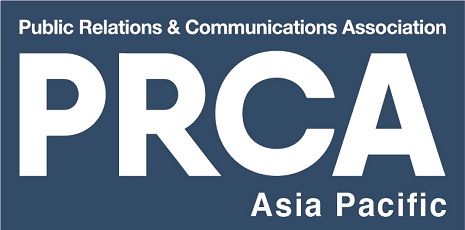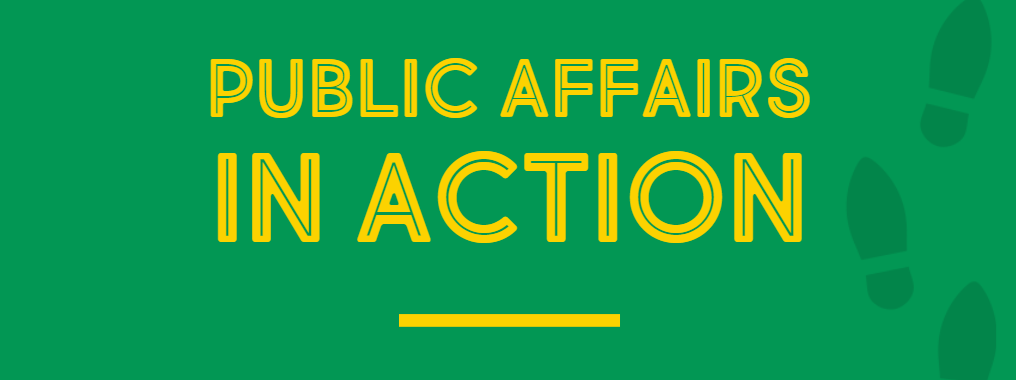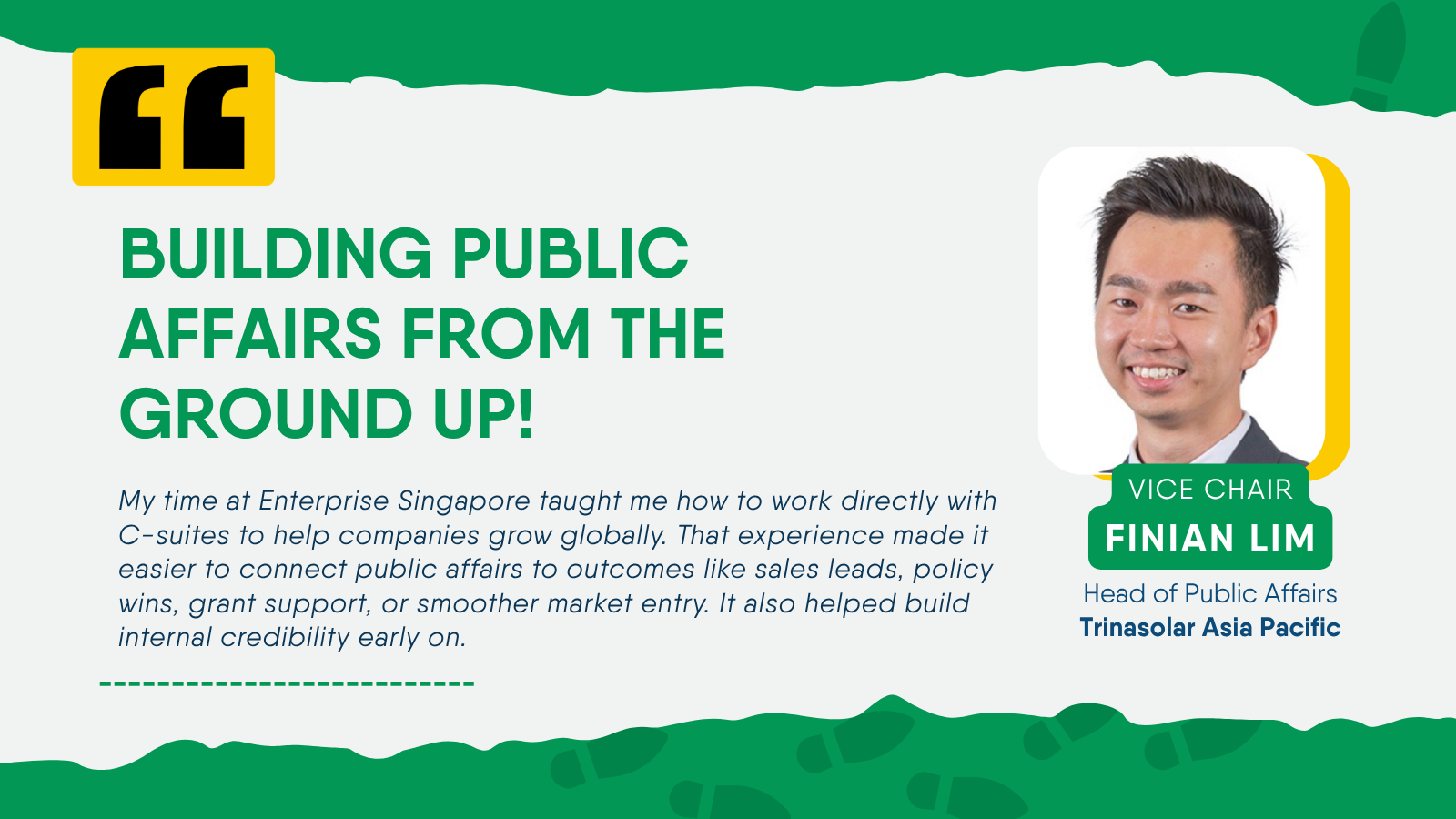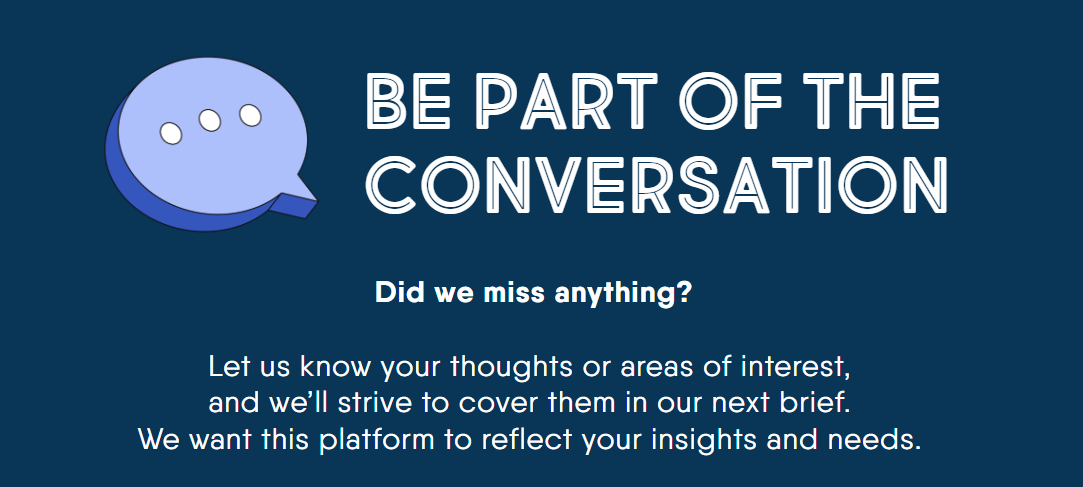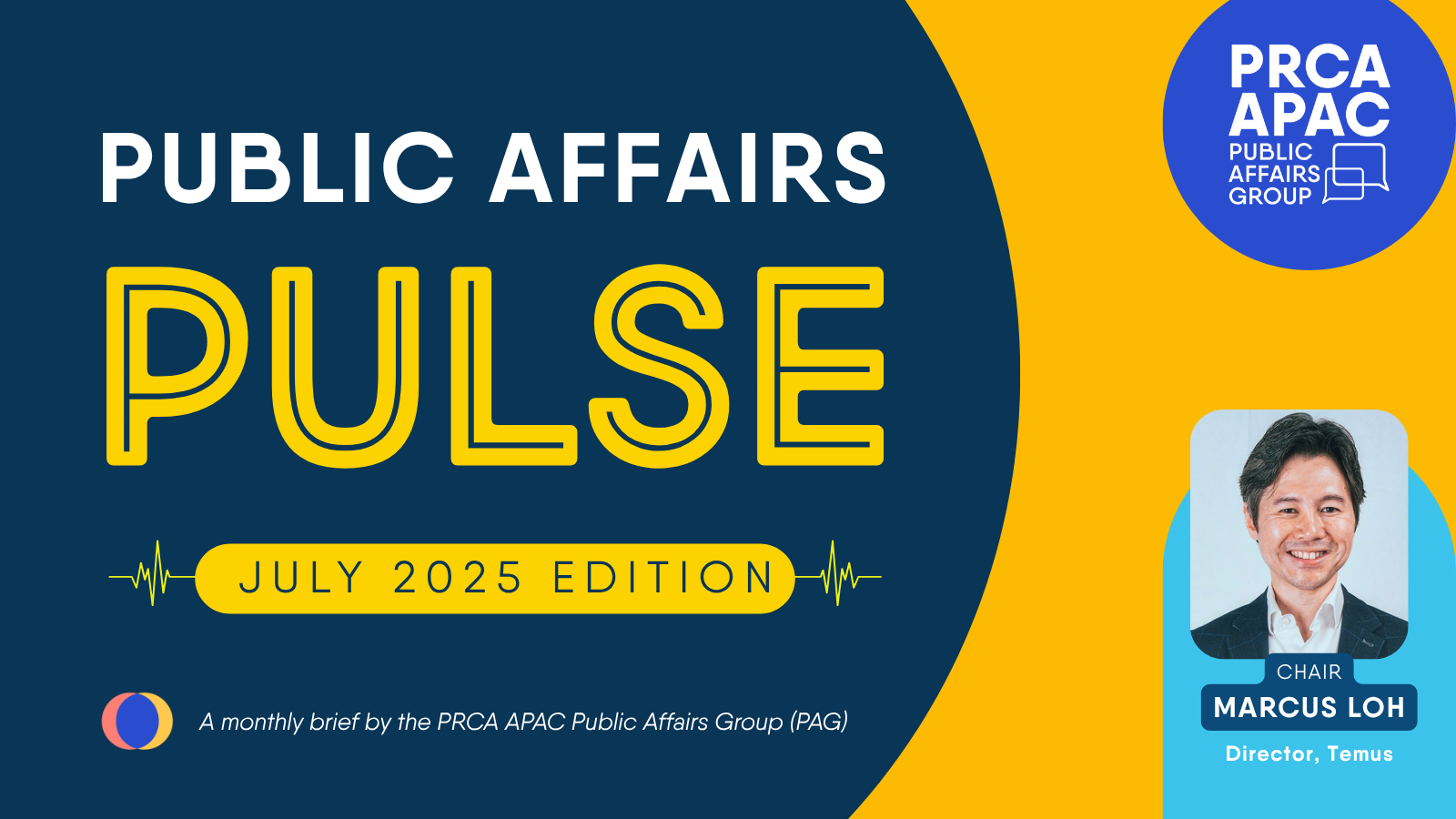
DEAR FRIENDS IN THE PRCA APAC COMMUNITY,
What do Singapore’s Formula One Grand Prix and Southeast Asia’s energy transition have in common? Both demonstrate how the disciplines of public affairs – convening power, stakeholder alignment, and strategic communication – can accelerate economic outcomes.
In July, our inaugural PAG Pulse webinar tackled ASEAN’s energy transition. With over 700 million people and electricity demand growing 3% annually, the race to decarbonize is on. I reflected on the webinar in an op-ed for The Diplomat, ‘What’s Holding Back ASEAN On Renewable Energy’.
Building on our case studies on public affairs, I invited Trinasolar’s Finian Lim to share how he built a public affairs function from the ground-up, and when embedded commercially, has helped unlock market access, influence policy, and enable coalitions for change. From stakeholder mapping to blended finance, it was a case study in building relevance with limited resources.
Next, on 26 August, we spotlight Singapore’s F1 Grand Prix. Nearly 90% of F1-related spend benefits local businesses, from hospitality to professional services. But the bigger story is how Singapore and enterprises leverage marquee events as platforms for brand diplomacy, reputation, and regional soft power. I’ll be joined by PAG members Tiffany Yiap (Truescope) and Daryl Ho (We.Comms) to explore what these events mean for public affairs.
Interest in public affairs is gaining momentum across our community. I look forward to seeing more PRCA members on the grid!
THE TALK OF F1
Singapore has become Southeast Asia’s sole F1 stop. But the real story isn’t just on the track.
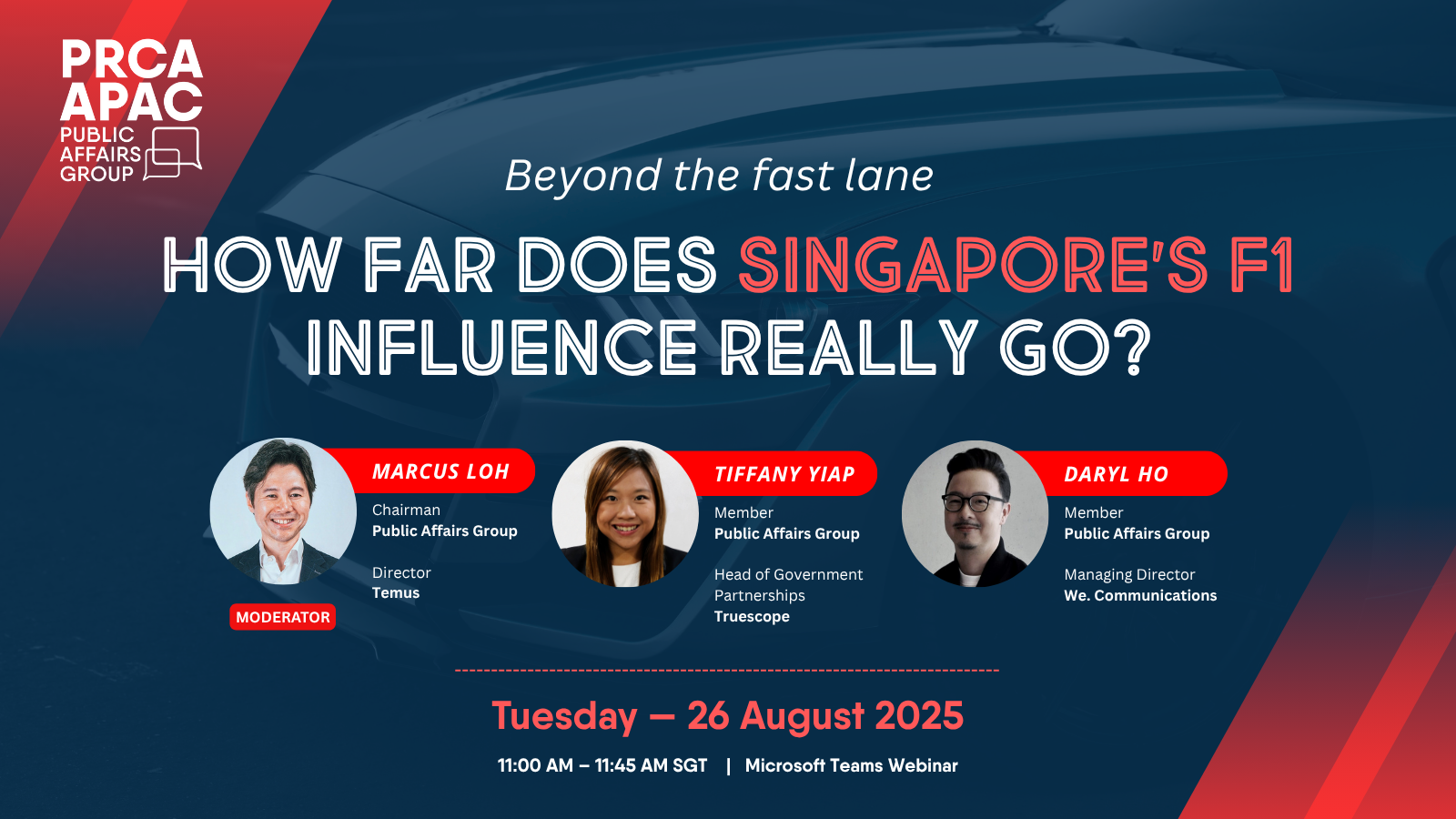
Nearly 90% of F1-related spending benefits local enterprises, from hospitality and MICE to media and professional services.
Beyond the race, F1 positions Singapore as more than a pit stop but a platform for business, brand storytelling, and regional convening power – reinforcing Singapore’s role as a trusted global node for reputation, policy, and commerce in Asia.
I’ll be joined by PAG members, Tiffany Yiap, Head of Government Partnerships at Truescope, and Daryl Ho, Managing Director at We.Communications Singapore, for a conversation which turns our attention to the F1 – and other flagship forums in September – which are reshaping business landscapes and brand relevance in Singapore and across the region.
Inside ASEAN’s Energy Transition: Unlocking Collaboration, Policy, and Business Opportunities in a Decarbonizing Region
The PRCA APAC Public Affairs Group kicked off its Pulse Webinar Series with a timely discussion on ASEAN’s energy transition. As energy demand soars across Southeast Asia, Finian Lim, PAG Vice Chair and Head of Public Affairs, Trinasolar Asia Pacific, explored regional progress, challenges, and opportunities, and the growing role public affairs professionals can play in supporting this transition.
ASEAN’s population of over 700 million has more than doubled its electricity use in just two decades, with demand rising ~3% annually. Much of this growth is still powered by coal, contributing to emissions and climate-related risks like heatwaves and flooding. The need for decarbonization is urgent.
7 key takeaways:
- Renewables have become more cost-effective, thanks to rapid advances in solar panel efficiency and battery storage. In several markets, they’re already the cheapest source of new power. But scaling remains difficult due to fragmented regulations, grid bottlenecks, investment uncertainty, and misalignment between energy supply and demand centers. As of 2022, renewables made up just 15% of ASEAN’s energy mix, well below the 2025 target of 23%.
- Still, bright spots are emerging. Vietnam has installed over 16 GW of solar but now faces grid constraints. Thailand is scaling floating solar and grid upgrades. Malaysia is shifting to market-based models like net metering and direct PPAs. Indonesia is advancing with international funding and policy reforms, despite its reliance on coal. The Philippines is gaining traction with bold auctions and open investment rules. Singapore, though small, is driving cross-border electricity trade and green finance innovation.
- A highlight of the session was the fireside chat between Marcus Loh and Finian Lim. They emphasized that real progress depends on collaboration—between governments, financiers, developers, and communities. Institutions like Infrastructure Asia help structure public-private partnerships. The IEA’s regional office supports policy harmonization. And financing bodies like ADB and the World Bank provide blended finance and de-risking instruments to improve bankability.
- Technology also plays a central role. ASEAN can scale proven solutions such as smart microgrids for islands and remote areas, AI-driven energy management systems, and modular solar-plus-storage systems – already deployed in places like the Maldives. These aren’t theoretical; they’re working solutions.
- Singapore’s role as a regional connector, green finance hub, and innovation testbed was also underscored. From supporting cross-border projects to piloting hydrogen and BESS, Singapore is shaping the region’s clean energy landscape.
- The transition also opens up new job opportunities across permitting, engineering, O&M, digital services, ESG, carbon markets, and more. Business models like Energy-as-a-Service are gaining traction, while workforce reskilling is becoming essential to support inclusive growth.
- For public affairs professionals, this transition brings new relevance. Whether shaping ESG narratives, engaging stakeholders, advising on regulatory strategy, or communicating complex energy and finance issues to broader audiences—our role is critical. Energy is no longer a niche topic; it’s a central part of corporate strategy, requiring strong, trusted communication and stakeholder alignment.
Trinasolar Asia Pacific’s Finian Lim, on Building Public Affairs from the Ground Up.
Starting from zero: When I joined Trinasolar, there was no preexisting public affairs setup in Asia Pacific. I had to build it from the ground up – designing the strategy, identifying key stakeholders, and aligning the work with business outcomes across highly diverse energy markets.
Shaping the strategy: I structured our public affairs approach around four pillars: stakeholder engagement, policy advocacy, crisis management, and regulatory monitoring. This framework provided clarity on how we could enable market access, shape policy, manage reputational risks, and support long-term business growth. From day one, the focus was on relevance and impact, not just activity.
Mapping stakeholders with purpose: I used a two-dimensional matrix: stakeholder influence versus commitment. High-influence, high-commitment stakeholders became core partners. Others needed consistent engagement to build alignment. This helped focus our limited resources and guided how we built coalitions and advanced conversations with ministries, regulators, industry groups, and media.
Connecting to the business: My time at Enterprise Singapore taught me how to work directly with C-suites to help companies grow globally. That experience made it easier to connect public affairs to outcomes like sales leads, policy wins, grant support, or smoother market entry. It also helped build internal credibility early on.
Adapting to a new mindset: Transitioning from public service to the private sector meant rewiring how I worked. I had to think faster, speak commercially, and defend the value of public affairs in hard business terms. Navigating internal priorities in business Chinese – while also engaging regional policymakers – added another layer of complexity, but also made the role more rewarding.
Delivering with limited resources: With a lean setup, we moved quickly – hosting policy roundtables, engaging decision-makers, publishing thought leadership, and forming alliances with developers and utilities. Every action had to be targeted and business-aligned. Early wins proved that public affairs could drive growth, not just manage risk.
The human element: At its core, public affairs is about trust. Relationships – both internal and external – are what move the needle. My advice to others building from scratch: be purposeful, stay commercially relevant, and always lead with connection.
Some useful readings:
